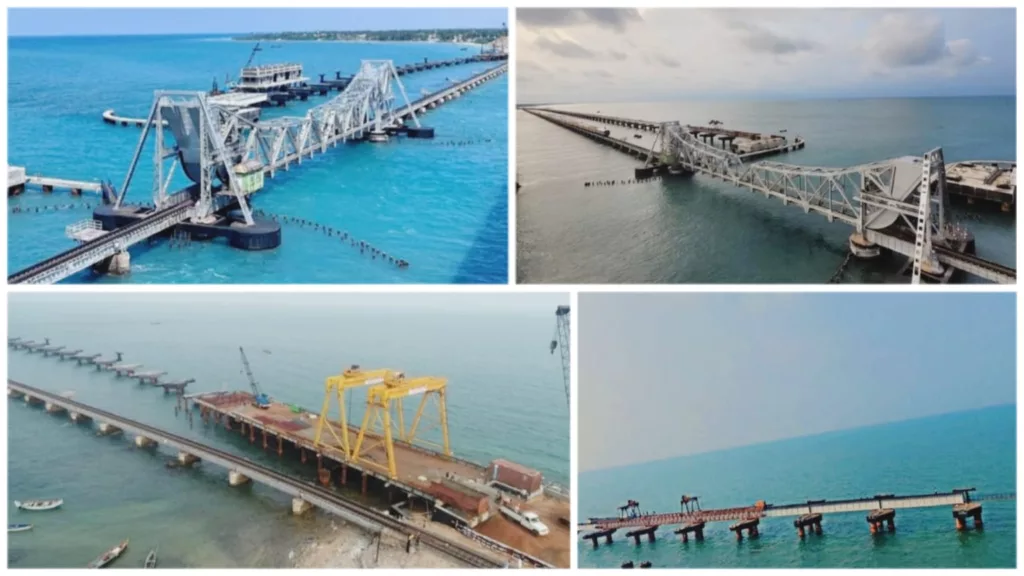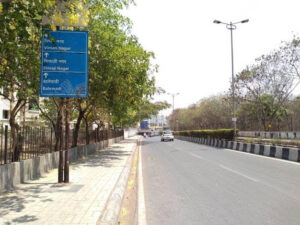Pamban Bridge: India’s first vertical lift railway sea bridge. Check features.

Pamban Bridge: India's first vertical lift railway sea bridge. Check features.
By: Pune Pulse
October 28, 2023
Pune: The New Pamban rail sea bridge in Tamil Nadu is nearing completion, with 84% of the reconstruction work finished by December 2022, surpassing the earlier timeline of March 2023.
This engineering marvel is a significant upgrade over the century-old Pamban Bridge and is set to become India’s first vertical lift railway sea bridge, connecting Rameswaram Island with the mainland.
The Railways Minister, Ashwini Vaishnav, recently shared an exciting update on Twitter, stating that the bridge is now on the verge of completion.
The main features of this architectural marvel are as follows:
1. A BRIDGE TO TRANSFORMATION
The New Pamban Bridge, constructed at a cost of approximately Rs 535 crores, signifies a transformative moment in India’s infrastructure landscape. It is set to replace the iconic Pamban Bridge, which was inaugurated in 1914 as India’s first-ever sea bridge. This new railway sea bridge holds several key features that promise to enhance connectivity, facilitate trade, and boost tourism.
2. SIZE AND STRENGTH
Spanning a length of 6,776 feet, the New Pamban Bridge ranks among the longest sea bridges in India. Built during British colonial rule to foster trade ties with Sri Lanka, the old bridge served its purpose but was limited in its capabilities.
3. PARALLEL PROGRESS
Developed by Rail Vikas Nigam Limited (RVNL), the new bridge runs parallel to its predecessor. Notable differences include an elevation of 3 meters, making it 12.5 meters above sea level. It also boasts a total of 100 spans across the sea, a significant upgrade from the old bridge.
The new Pamban Bridge boasts an efficient navigation system, highlighted by its vertical lift mechanism. A crucial element of this system is the 72-meter-long vertical lift span, which enables the seamless passage of ships and steamers beneath the bridge. This modernized mechanism, powered by an electro-mechanical process, replaces the manual operations of the previous bridge. Furthermore, the vertical lift span can be raised to a height of 17 meters, showcasing its elevated performance. This advanced technology, combined with integrated train control systems, ensures a smooth and efficient connectivity experience. In contrast to the old bridge, which utilized Scherzer rolling lift technology, the new Pamban Bridge features a modernized and electrified railway track.
The new bridge offers several advantages, such as improved train speeds and increased load-carrying capacity. Trains on this dual-track bridge will be capable of reaching speeds of up to 65 kmph, a significant enhancement compared to the previous speed limit of 15 kmph. Additionally, the bridge’s substructure allows for potential future expansion, while the superstructure accommodates a single line. As we anticipate the inauguration of this remarkable infrastructure, the New Pamban Bridge serves as evidence of India’s progress, unlocking new opportunities and ushering in an era of improved connectivity, trade, and travel.







